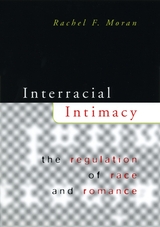Youthful Offenders at Highfields: An Evaluation of the Effects of the Short-Term Treatment of Delinquent Boys
University of Michigan Press, 1958
eISBN: 978-0-472-91139-4 (OA)
See other books on: Behavioral Management | Effects Short - Term Treatment Delinquent Boys | Evaluation | Weeks, H. Ashley | Youthful Offenders at Highfields
See other titles from University of Michigan Press
eISBN: 978-0-472-91139-4 (OA)
ABOUT THIS BOOK
ABOUT THIS BOOK
At Highfields Youthful Offenders —are kept for no longer than four months —are permitted to leave the grounds with any responsible adult —are granted three-day furloughs over weekends to visit their families —live with no more than 19 other boys in a 14-room house on a 320-acre estate —work forty hours a week at the nearby New Jersey Neuropsychiatric Institute —actively participate in guided group interaction sessions. How successful is this program? How do the results compare with those of the more traditional reformatory? At one-third the usual cost per capita, is Highfields the answer in delinquency prevention? H. Ashley Weeks, on the basis of a survey by the New York University Department of Sociology, evaluates the success of a program of crime prevention in action. Measuring Highfields against a traditional institution, he gives a statistical analysis not only of success and failure rates but of change in the basic personality structures of the youthful offenders. Tables show the comparative distribution of boys sent to Highfields who completed their stay and have not been re-institutionalized; the disposition of forty-one boys returned to the courts as unsuitable for residence at Highfields; the type of delinquency which returned boys to confinement. Professor Weeks gives the tetrachoric correlations between nine background variables including extent of education, number of delinquencies, marital status of parents, number of cities lived in; he shows the comparative distribution of responses on ten scales adapted from the Army Psychoneurotic Screening Inventory. In addition, the volume contains essays by Professor Ernest W. Burgess, Richard L. Jenkins, Walter Reckless, G. Howland Shaw, and Hellmen J. Warner, appraising Highfields in the light of current thought. Youthful Offenders at Highfields, with statistical proof of effective delinquent treatment, points the way to a new method of crime prevention, a method that rests on a new concept of the nature of behavior and its dynamics.
See other books on: Behavioral Management | Effects Short - Term Treatment Delinquent Boys | Evaluation | Weeks, H. Ashley | Youthful Offenders at Highfields
See other titles from University of Michigan Press












